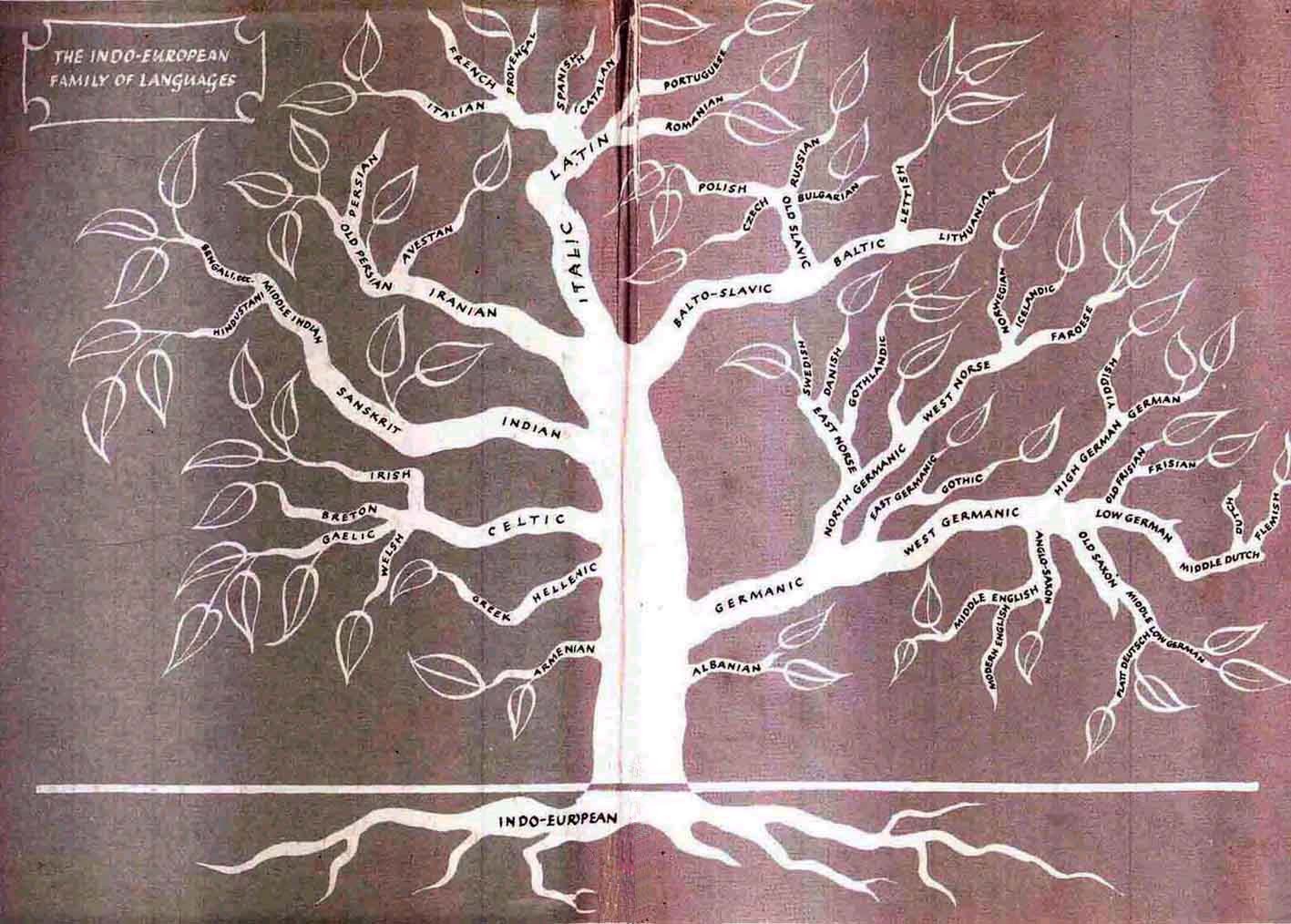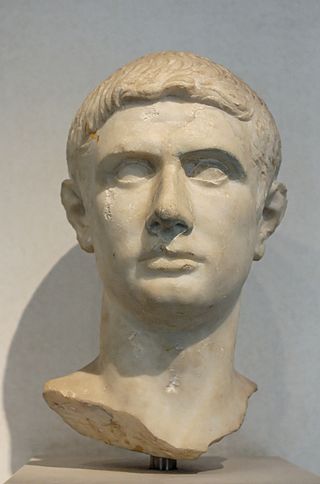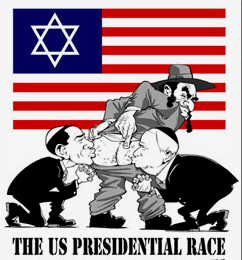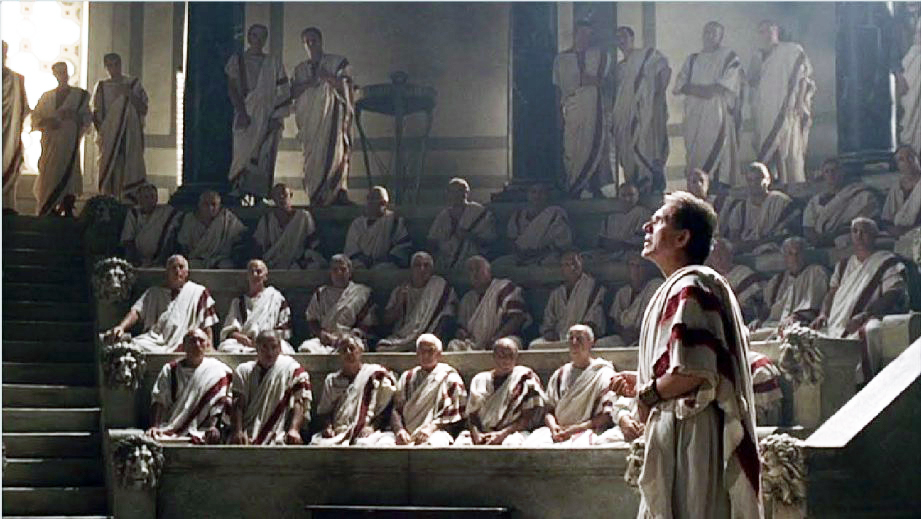Heinrich Himmler
Speech to the SS Group Leaders
(18 February 1937)
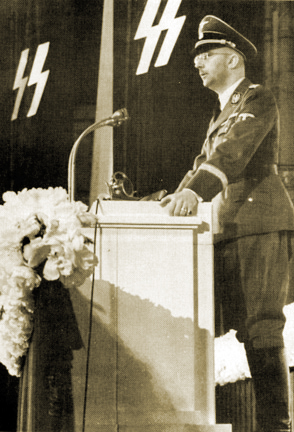
When we took over power in 1933, we came across the gay clubs. The registered members totalled two million; conservative estimates by processing officials go as high as two to four million homosexuals in Germany. Personally I think the number was not that high because I do not believe that all those who were in the clubs really were personally homosexual.
I would like to go over with you a couple of ideas on the issue of homosexuality.
Among the homosexuals there are those who take this view: What I do is nobody else’s business, it is a purely private matter. However, all things which happen in the sexual sphere are not the private affair of the individual, but impinge upon the life and death of the nation. A people which has many children has the qualifications for world power and world domination. A people of good race which has too few children has a sure ticket for the grave, for insignificance in 50 to 100 years, for burial in two hundred and fifty years.
However, even apart from this number—I have taken up only the numerical issue—this nation can go kaput from something else. We are a Men-state (Männerstaat), and, with all the faults which this Men-state has, we must staunchly hold on to it, for the constitution of the Men-state is the better one.
There have also been in history Women-states. You have surely heard of the word matriarchy. There were Amazon-states not only in fable but in fact. There were matriarchal constitutions in the friezes—especially among sea-peoples. We can follow their traces and emergence even up to our time. It is no mere coincidence that Holland gladly lets itself be ruled by a queen and that in Holland the birth of a daughter, the Queen, is more welcomed than the birth of a son. This is no peculiarity, but derives from the ancient instincts of maritime peoples. [Translator’s note: Among maritime peoples the men are often away at sea, and hence the women tend to be unusually independent, if not actually rulers. This tendency has been noted by observers of Iceland after the banking crisis in 2007. It was primarily the women there who rose up and demanded punishment of the bankers.]
For centuries, for millennia, the Germanic peoples and especially the German people have been officially ruled by men. This Men-state, however, is now in the process of going kaput on account of homosexuality. In the field of government I see the main error in the following: the state, the organization of the people, the army and whatever else is connected with state institutions, all these attain their positions based on merits, apart from human shortcomings. Even the occasional, quite unrealistic attainment of an official post after the “First” (Einser) in the judicial examinations is nevertheless still a selection based on merit. The selection in this case is made according to merit because first the First is taken, and then the Bruckeinser [exam] and finally the Second [exam], etc., are taken.
In the positions of the state and the economy, in which women are employed, no honest man will be able to claim that the position is gained purely on the basis of merit. [For example], in the moment when you choose a typist and you have two candidates before you (a very ugly 50-year old one who types 300 syllables [per minute], almost a genius in this field, and another who is 20 years old, racially sound and pretty and who types only 150 syllables), and you take the pretty young 20-year old candidate who types fewer syllables.
Well, one can laugh, for this is harmless and proves meaningless because, if she is pretty, she will soon get married; and besides the position of stenographer is not crucial for the state; it now has others to choose from.
But in the moment when this principle—not to pick purely on merit: a sexual principle takes root in the Men-state—, the destruction of the state begins. I will take an example from life. I want to emphasize that I say: from life. I want to interject here in this matter that I doubt that any place on the present inhabited earth has gained so much experience in the field of homosexuality, abortion, etc., as we have in Germany as the Secret State Police. I believe that we can really speak as the most experienced people in the field.
Councillor X is homosexual and is not selecting on the basis of the merit-principle the assessors that he needs for his office in the government. He will not choose the best lawyer. He will not say that assessor Y may not be the best lawyer, but he has received a good score, has been in the practice of law, and, what is much more significant, looks good racially and is ideologically in order. No, he does not take a well-qualified and good looking assessor, but rather seeks out the one who is also a homosexual. These people know each other with a glance across a room. If at a dance you have 500 men, within a half hour they have mutually picked out those who have the same disposition as they. How that happens, we normal people cannot at all imagine.
The councillor seeks out the assessor who has the worst score and who is also ideologically out of order. He does not ask about his performance, but recommends him to the director of the ministry for appointment. He praises him and justifies his recommendation in detail. The assessor is now hired, for it will never occur to the director of the ministry to ask for greater details and to examine the hiring more closely because from the outset as an old official he assumes that the councillor’s recommendation is based on merit. The idea that the assessor has been recommended due to the similarity of his sexual predisposition does not enter the head of a normal man.
It does not stop with these two because the assessor, who is now a governmental official, will proceed on the same principle. If in a Men-state you have a man with such a disposition in any position of authority, you are sure to find there three, four, eight, ten or even more men of similar disposition; for one draws in another, and watch out if there are one or two normal men among these people; they are basically damned, they can do what they want but they will be ruined. Let me give you an example of a comrade from this very circle, for whom it went like this. SS-Obergruppenführer von Woyrsch was present in Silesia at the time of his struggle with the homosexual SA-Gruppenführer Heines and the homosexual Gauleiter and Oberpräsident Brückner. Since he was the man who upset this wonderful accord, he was persecuted not because, as was said, he is not like us, but always on moral, political, ideological—National-Socialist grounds.
Homosexuality therefore undoes in the state every merit, every basis for merit, and destroys the state in its foundations. That is not all: the homosexual is a thoroughly mentally-ill man. He is soft, he is in every crucial regard a coward. I believe that he can be brave here or there in war; in the field of civil courage however they are the most cowardly men that there are.
Interconnected with this is the fact that the homosexual lies pathologically. He is not lying—to take an extreme example—as a Jesuit. The Jesuit lies for a purpose. He says anything whatever with a beaming face and knows that he is deceiving you. He has a moral foundation: for the glory of God, majorum dei gloriam. The end justifies the means. There is a whole moral philosophy, a moral doctrine that Saint Ignatius worked out.
The Jesuit therefore is lying and knows it; he does not forget for a moment that he is lying. The homosexual however lies and believes it himself. If you ask a homosexual about something: Have you done that? Answer: No. I know of cases where homosexuals interviewed by us said: with my sacred oath, in honour of my mother, or may I immediately drop dead here if this is not true. Three minutes afterwards, when with the help of our evidence we said to him, “Please, and this?” [irrefutable evidence], he unfortunately did not topple over, but is still alive.
I never understood that in the beginning. In the years 1933-34 we approached these matters like ignorant fools because that was and is a world so strange to a normal man is that he can hardly imagine it. Gruppenführer Heydrich and I and some other people had to really learn in the field and only thanks to bad experiences. I asked myself at the beginning if the fellows were lying. Today it is quite clear to me that they cannot help it. I therefore think no more of asking a homosexual: can you give me your word? I do not anymore because I know that I will get a false word. At the moment in which he says something with watery eyes, the homosexual is convinced that it is true. In my experience homosexuality leads to an absolute, I would almost say, mental insanity and madness.
The homosexual is of course the most appropriate object for every kind of extortion, firstly because he is himself liable to arrest, but secondly also because he is a soft fellow and thirdly because he lacks will and nerve. Moreover, the homosexual has an insatiable desire to communicate in all areas, especially in the sexual area. You usually find that the one who gets caught then tells you uncontrollably all the names he knows. Since there is no fidelity in the love of man for man, the homosexual tells everything unrestrainedly and does so in the hope that he can perhaps save his own skin thereby.
We need to be clear about this. If we continue to have this vice in Germany without being able to fight it, then that is the end of Germany, the end of the Germanic world. Unfortunately we do not have it as easy as our ancestors.
The homosexual, who was called Urning, was sunk in the swamp. The professors who find these bodies in the swamp are determined not to realize that in ninety out of a hundred cases they have before them a homosexual who, with his robe and all, was sunk in the swamp. [Chechar’s note: Himmler is referring to Tacitus’ study on ancient Germanics: “Traitors and deserters are hanged; cowards and those guilty of unnatural practices are suffocated in mud under a hurdle.”] That was not a penalty, but rather just the extinction of an abnormal life. That had to be removed, as we pull out nettles and throw them in a pile and burn them. There was no feeling of revenge, but the person in question had to go.
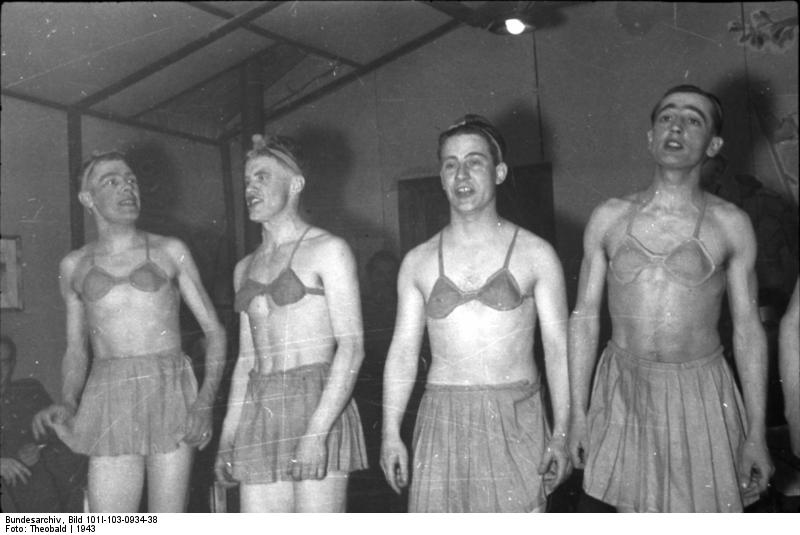
So it was with our ancestors. With us unfortunately that is, I have to say, no longer possible. Within the framework of the SS I would like to explain very clearly the following. I stress this point: I know exactly what I am saying. This of course is not intended for leaders’ meetings, but you can repeat it conversationally in individual discussions with one person or another:
In the SS today we still have about one case of homosexuality a month. In the entire SS in a whole year approximately eight to ten cases occur. I have now decided upon the following: in each case these people naturally will be publicly degraded, expelled, and handed over to the courts. Following completion of the punishment laid down by the court, by my orders they will be sent to a concentration camp, and they will be shot in the concentration camp while trying to escape. I will make this known by order to the unit to which the person in question belonged. I hope thereby to finally have done with persons of this type in the SS, so that we will at least keep pure the good blood which we have in the SS and the on-going recovery of the kind of blood which we are cultivating for Germany.
But this does not solve the problem for all of Germany. One should harbour no illusions about the following. If I bring the homosexual to court and have him locked up, the case then is not finished, for the homosexual comes out of prison just as homosexual as he went in. Therefore the whole issue is not cleared up.
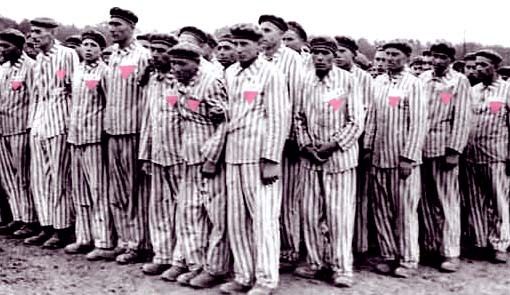
It is cleared up only to the extent that this vice has been denounced, in contrast to the years before our seizure of power. Although we had the paragraphs before the war, during the war, and after the war, in reality nothing happened. I can best make that clear by an example: in the first six weeks of our activity in this area in 1934 we brought more cases to court than had the entire police department in Berlin in 25 years. No one should come and say that the problem got big only because of Rohm. He of course was a big setback, but the problem flourished before the war, during the war, and even after the war.
Now you see you can regulate everything possible with state and police measures. One can manage the prostitute problem which in and of itself is quite harmless in comparison to this other problem. That is a matter that by certain measures can be brought under sustainable control for a civilized nation. We will be exceedingly generous in this matter because one cannot, on the one hand, want to prevent all the youth from drifting toward homosexuality and, on the other hand, block for them every [sexual] outlet. That is madness. In the end every blocked opportunity to meet up with girls in big cities, even if it is for money, has therefore a big downside.
Amid all these considerations we must not forget that Germany has unfortunately become (up to two-thirds of it) an urban nation. The village does not have these problems. The village has its natural and healthy regulation of all these issues. There despite the clergyman, despite Christian morality, despite a thousand years of religious education, the youth climbs through the bedroom window of the girl. The problem is thus put in order. There are a few children born out of wedlock; a few of them are sprinkled about the village, and the minister is glad of it, for that gives him a topic for the pulpit. The boys do the same thing as before and—do not be fooled—as was done in our past. The whole theory which one has rightly built up that the Germanic girl, if she is unlucky enough not to get married until 26 or 30-years old, lived up to that time as a nun, is a myth. The blood laws, however, were strict, that no guy and no girl was allowed to mess around with someone of inferior blood. That law was relentlessly and strictly observed. Furthermore this was strict: marital fidelity. If that was broken by the woman, the death penalty was imposed. For from that there was a danger that foreign blood come in.
That was all natural; the social order then was clean and decent and acted in accordance with the laws of nature and not as our order today against the laws of nature.
As I said, the questions which belong to this sector can somehow be brought into order. The more that we facilitate early marriage, that our men can get married by the age of 25, the more the other problem decreases: it then takes care of itself. The issue of homosexuality, however, cannot bring itself into order. Obviously I can forth-lock up all the male prostitutes in Germany and put them in a camp.
I only pose to myself the question: if I lock up 20,000 hustlers from the big cities, will I bring back to a normal way of life the maybe three or four thousands of these who are young enough (17 to 18) by means of discipline, order, sports, and work? It has been done successfully in quite a number of cases. But the moment when the hustlers are not there—I am not going to lock up the homosexuals—then there is a risk that the millions of homosexuals will seek new victims for themselves. So this is a sword that cuts both ways.
We will gather up all of these 17 to 18-years old boys, except for those who are already totally spoiled, and bring them into a camp. We will try to make these boys reasonable again, something which, as I said, has already been done successfully in a large number of cases.
All this does not solve the whole problem. The only solution I see is as follows: we cannot let the qualities of the Men-state and the benefits of male society diminish through errors. We have overall, in my opinion, a much too strong masculinization of our whole life. I feel as though I were witnessing a catastrophe when I see girls and women—especially girls—who march through the area with wonderfully well packed knapsacks. That can lead to trouble. I view it as a catastrophe when women’s organizations, communities of women, and women’s federations become active in an area; that destroys all feminine charm, all feminine dignity and grace. I view it as a disaster if—I am talking about things in general, for it does not apply to us [in the SS] directly—we foolish men want to turn women into logical instruments of thought and educate them in everything, which is only possible if we also masculinize them [so far] that in time the difference between the sexes, the polarity, disappears. Then the path to homosexuality is not far.
The question now is posed: the SS says it is an order. The party also says it is an order. These claims are not at all mutually exclusive. We are very clearly and expressly a National Socialist order of definitely Nordic men and a sworn community of their kin (Sippe). We are firstly a soldier order, a National Socialist soldier order, bound by rearing and blood to Nordic blood, a tribal community (Sippengemeinschaft), if you will. Previously one would have said: an association of nobles (Adelsgenossenschaft). I do not purposely use this expression. But I want to say by using it that our task has to do with the breeding and rearing of people (das Menschenzüchterische), while the task of the political order has to do with the political leading of the people.
The moment in which it is clear to me that the party is a political order, it must take on more and more a spiritual meaning and less and less a military meaning, that of packed knapsacks and falling in line, etc. That applies right down to individual nuances.
I come back to this point again. I said we are masculinizing all of life too much. I will cite a few examples, to which you can probably add some drawn from your personal experience and from experience with different children.
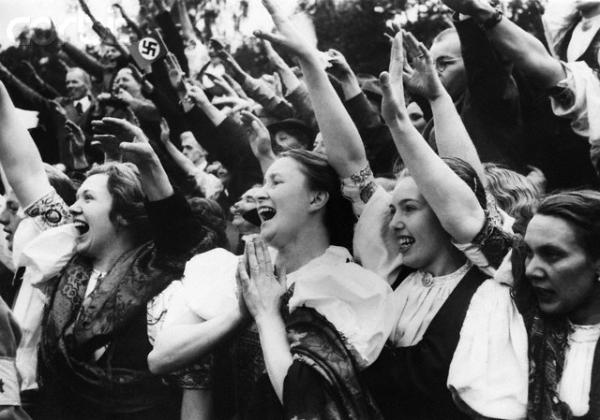
I view it as disastrous for a people when boys tell their mothers: “When we are marching in the Hitler Youth, see to it that you do not pass by. I would greet you, yes, but the others would laugh, I would then be considered a mama’s boy and a weakling.” I view it as disastrous for a people when a boy is ashamed of his sister and his mother or is directed to be ashamed of women, in this case of the women who are closest to him, of his mother and of his sister who is becoming a woman. When a boy who is in love with a girl is mocked more than the normal amount, is designated as not fully respectable and as a sissy, and if one says to him: a guy does not bother with girls, he won’t bother with them. There are then only friendships with other youths. Men dominate in the world: so the next step is homosexuality.
These are the thoughts of Herr Blüher [a notorious pederast], which then prove that: “In general, the greatest form of love is not between man and woman; with that there are children; that is something animalistic. The greatest form is the sublimated love between man and man. It is only from this that the greatest things in world history have come about.” But that is the outrageous hypocrisy of these people who stake claim to Alexander the Great and Bismarck. There are no great men whom the homosexuals do not claim for themselves: Caesar, Sulla, etc. I think Don Juan is not yet claimed, but otherwise pretty much all. That is now served up in palatable form to the young people who are already in a hugely masculinized movement and because of the men-camps have no opportunity to get together with girls. In my opinion we need not be surprised that we have gone down the road to homosexuality.
I see a fundamental change only through the following:
1) This is something particularly urgent for us in the SS: We absolutely must re-educate the SS man and boy to become a chivalrous man or a young gentleman. That is the only way in which we can draw the line very clearly so that we do not fall into Anglo-Saxon and American conditions. I once told an English woman who had said that she found it terrible that men greet women first: “With you probably the hens do the courtship display around the rooster! Does this seem with you to be different from normal?” A consequence of the over-privileged woman is that in America no man any more dares to look at a girl, since otherwise he will be brought before the marriage court and made to pay for it. In America homosexuality is absolutely a defensive measure for the men because they have fallen into such slavery to the women. The woman can behave like an axe there: she just starts hacking away on something. She is never rebuked: the best example of a tyranny by women!
There is no danger among us, however, that the chivalry of the man be overplayed and exploited by the other side, since the women in Germany by habit and education are not inclined to do that. In any case we must educate our young always to be chivalrous men who stand up for women.
I recently said to a Hitler Youth leader: “You are usually so un-Christian, but your attitude toward women is the purest Christianity that is at all possible.” A hundred and fifty years ago someone at a Catholic university wrote a doctoral thesis with the title: “Does a woman have a soul?” From this the whole tendency of Christianity emerges: it is directed at the absolute destruction of women and at emphasizing the inferiority of women. The entire substance of the priesthood and of the whole of Christianity is, I am firmly convinced, an erotic union of men (Männerbund) for the erection and maintenance of this 2000-year old Bolshevism. I reach that conclusion because I know very well the history of Christianity in Rome. I am of the conviction that the Roman emperors, who eradicated (ausrotteten) the first Christians, did exactly the same thing that we are doing with the communists. These Christians were then the worst yeast which the great city contained, the worst Jewish people, the worst Bolsheviks that there were.
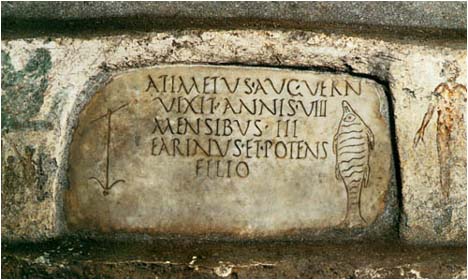
The Bolshevism of that time had now the power to become great on the carcass of the dying Rome. The priesthood of the Christian church which later subjugated the Aryan church in unending conflicts goes on, since the 4th or 5th Century, longing for the celibacy of priests. It relies on Paul and the very first apostles who derogate the woman as something sinful and permit or recommend marriage as merely a legal way out of prostitution—that is in the Bible—, and derogate the procreation of children as a necessary evil. This priesthood continues along in this way for several centuries until in 1139 the celibacy of priests is fully implemented.
I assume that in the monasteries the homosexuality ranges from 90 or 95 to 100 percent. If today the trials that concern homosexuality among priests went on again and if we would treat the priests as [we do] any citizen in Germany, then I would undertake to guarantee for the next three to four years 200 or more such trials. The realization of the trials fails to take place not because there is a lack of cases, but because we just do not have as many officials and judges as we would need to employ. Within the next four years very conclusive evidence will be produced—I hope—that the Church organization in its leadership, its priesthood, is for the most part a homosexual erotic men-union (Männerbund) that on this basis has been terrorizing humanity for the past 1800 years, demands from it the greatest blood sacrifice, and has been sadistically perverse in its utterances in the past. I need only to recall the witch and heretic trials.
The German woman, not the man, has borne the greater sacrifice of blood in the witch and heretic trials. The priests knew exactly why they burned 5000-6000 women: exactly because they emotionally held fast to the old knowledge and the old doctrine and emotionally and instinctively could not be dissuaded, while the man had already converted by logic and thought: “There is no point. We are going under politically. I adapt, I let myself be baptized.”
I come back to our issue. I see in the whole movement an excessive masculinization and in this excessive masculinization the seedbed for homosexuality.
I ask you now, if you have the opportunity to discuss these ideas in detail—but not before the entire officer corps!—, to talk about these things with one man or another. Please make sure that our men, as it has been initiated by me, come together at the summer solstice celebration with the girls to dance.
I think it absolutely essential that we now and then arrange a dance for the young candidates in the winter to which we don’t invite girls who are in any way bad, but rather the very best—and where we give the SS-man the opportunity to dance with girls and to be happy and merry with them. I think this is particularly important for the single reason that [it helps to assure that] no one ever comes down the wrong road in the direction of homosexuality. That would be a negative reason. But I think it important also for a positive reason: we should not be surprised if this or that SS-man marries a completely wrong and racially worthless girl if we do not give the men the opportunity to get to know worthy, racially sound girls.
With the youth I see the need absolutely to take care that the boy of 16-17 years comes together with girls for a dancing lesson or some other event during communal evenings. The age of 15-16 years—that is a fact from experience—is the age at which the boy is on the tipping point. If he has a dancing lesson heartthrob or a childhood crush on some girl, he is won over, he has been drawn away from the dangerous plane
I thought myself obliged to speak to you once on these issues, my group leaders. This matter is deadly serious and cannot be solved with tracts and moral theories.
Gentlemen! A misguided sexuality brings about the craziest thing that the mind can imagine. To say we are animalistic is an insult to animals, for animals do not do such things. So, this question about properly guided sexuality is a question of life [or death] for every people.
__________________________
Translated especially for Neues Europa by G.F.H.
Syntactically revised and abridged for WDH


